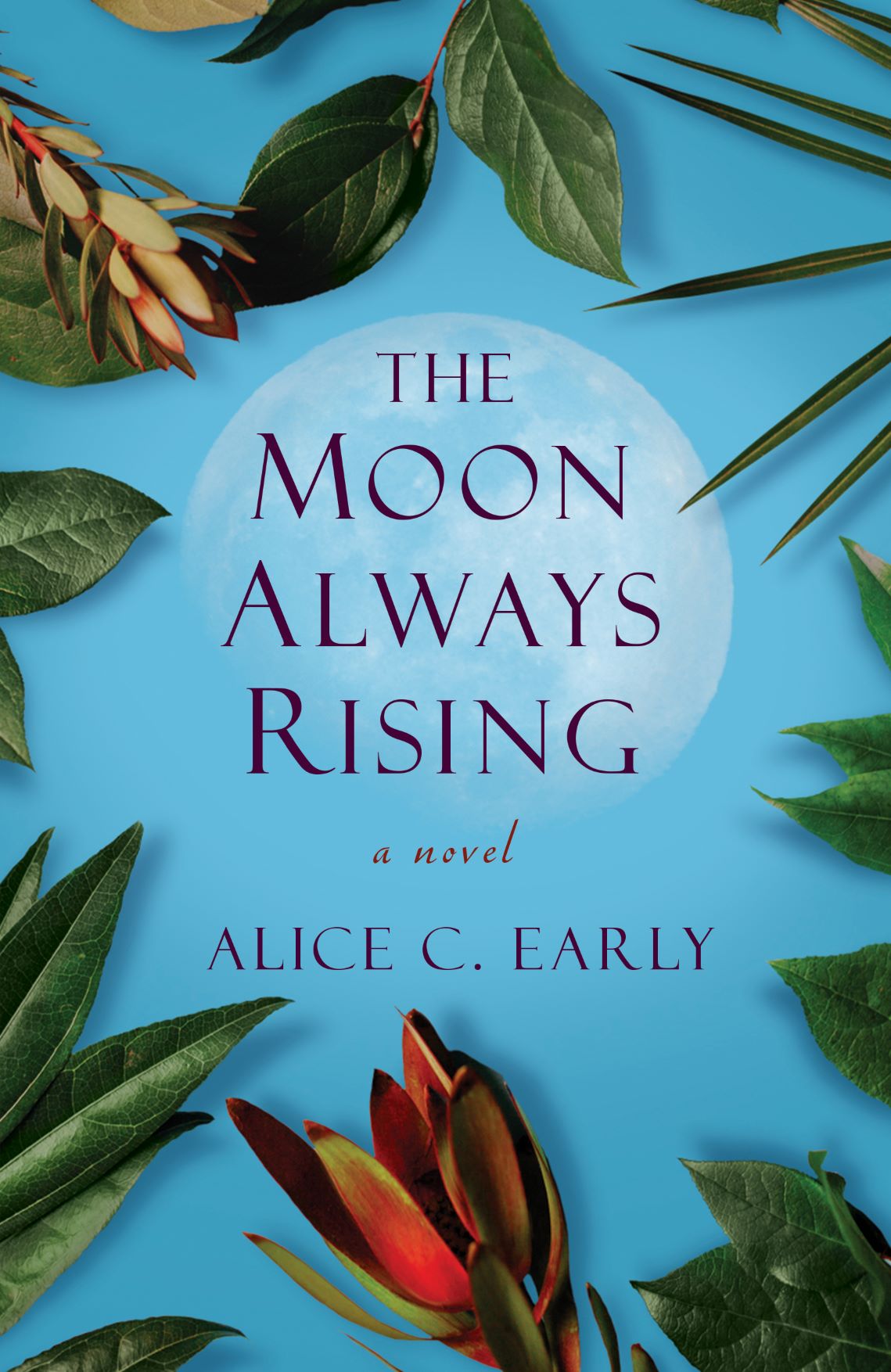Cover Reveal for The Moon Always Rising

When we’re perusing the shelves (at the bookstore, library or on-line) we need to be drawn in, intrigued, enticed to explore the description or back cover text. If that passes muster, we'll read a bit, see if we’re hooked, and decide whether or not to buy. A fiction cover needs to telegraph what to expect—will the pages hold a thriller or romance, or an historical, speculative, or literary story? The cover designers’ job is daunting: how to convey in images, color, and a very few words that THIS book is what you, the reader, wants to read next.
All authors make a pact with their readers about what kind of entertainment a novel offers. If that pact is fulfilled and the author meets or exceeds the reader’s expectations of laughter, tears, wonder, chills, warm-and-fuzzies or foregone sleep and page-turning suspense, the reader both finishes the book and feels satisfied.
That pact begins with the cover.
I’m thrilled to share with you the cover art for The Moon Always Rising. To me, it captures the enveloping tropical setting of the book’s Nevis sections and the story’s magical realism and mysticism.
The moon’s presence, its phases, and its light are threads throughout the book, partly because the jumbie almost always appears in the gloaming or at night and his presence is moonlit and evanescent. This might sound nerdy, but I kept track of the moon’s phases when the story takes place (1997 to 2000) to be sure, for instance, that on the March night in 2000 when the jumbie appears beneath a fingernail moon, there was, in fact, a new moon hanging over Nevis and on Christmas night when disaster strikes and Els risks everything, it was actually the dark of the moon.
All my life, the moon, so recently a media darling the 50th anniversary of the moon walk, has had a magical quality for me. I'm lucky to have spent my childhood, as well as the last 20 years, in places largely devoid of light pollution. On full moon nights here, the shadows are starkly drawn, one can walk the dirt roads without a flashlight, and it’s almost possible to read a book, if not a newspaper. Fifty years ago, I joined millions in watching in awe and pride as Neil Armstrong stepped onto the moon’s surface. That summer, instead of wallowing in mud at Woodstock with most of my friends, I was hitchhiking with my taciturn friend Linda up the West Coast, across Canada and down into the Dakotas, a story I’ll save for another time. By July 20, 1999, we’d reached eastern Washington State and the home of my college roommate’s family, who took us to see a local school play. The performance halted mid-act, and a huge (for those days) TV was rolled out so the rapt audience could watch the transmission from nearly 239,000 miles away. Traveling by thumb for weeks, I’d forgotten all about the moon shot and was grateful not to have missed the momentous event. It was eerie to see up close the craters and shadows I'd shaped into distant faces. I felt both amazed at man’s achievement and a little sad that this heavenly body, my friend in the night sky, had been invaded and might be somehow besmirched by our presence in the future.
It’s up to all of us to be sure that doesn’t happen.
I hope you like the ghostly depiction of our sister orb on The Moon Always Rising. If you were in Nevis at moonset after a full-moon night, it would look just like that.What about you? Based on its cover, would you pick up this novel and give it a chance to capture your imagination?



.png)

.jpg)